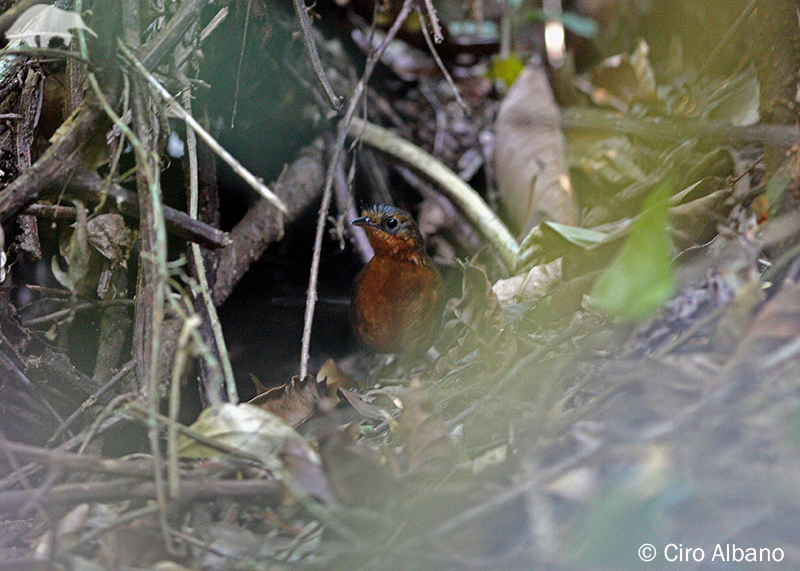About
Stresemann’s Bristlefront is so called because of the distinctive, stiff bristle-like feathers that protrude from the sides of its forehead.
The function of these stiff feathers is unknown. It belongs to a group commonly-known as the Tapaculos, found predominantly in South America. The elusive nature of this bird has hampered research efforts and very little is known about it beyond its appearance. The Stresemann’s Bristlefront was first discovered in the 1830s, but then seemingly disappeared for over a century until a second specimen was located in 1945. It then eluded ornithologists for another 50 years until an individual was sighted in 1995. Only recently, in 2010, was a tiny population located in the north-east of the state of Bahia, Brazil. This small group is now the focus of conservation attention. In 2012 a tennis-ball sized hole was identified as a 6ft nesting tunnel. Remaining tracts of humid forest need to be urgently protected from further degradation and destruction. Research to understand the species ecological requirements and threats is needed.
- Order: Passeriformes
- Family: Rhinocryptidae
- Population: <50
- Trend: decreasing
- Size: 20cm
EDGE Score
Distribution
Endemic to a very limited range of valley-floor forest in Bahia state in east Brazil.
Habitat and Ecology
This species’ occur in undergrowth of humid, lowland forest, and have also been observed in drier forest between patches of humid forest. Very little is known about their ecology, though they have been observed searching amongst leaf litter searching for arthropods, and a tennis-ball sized hole was identified as the first known nest site in 2012.
